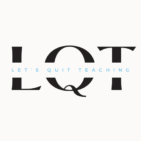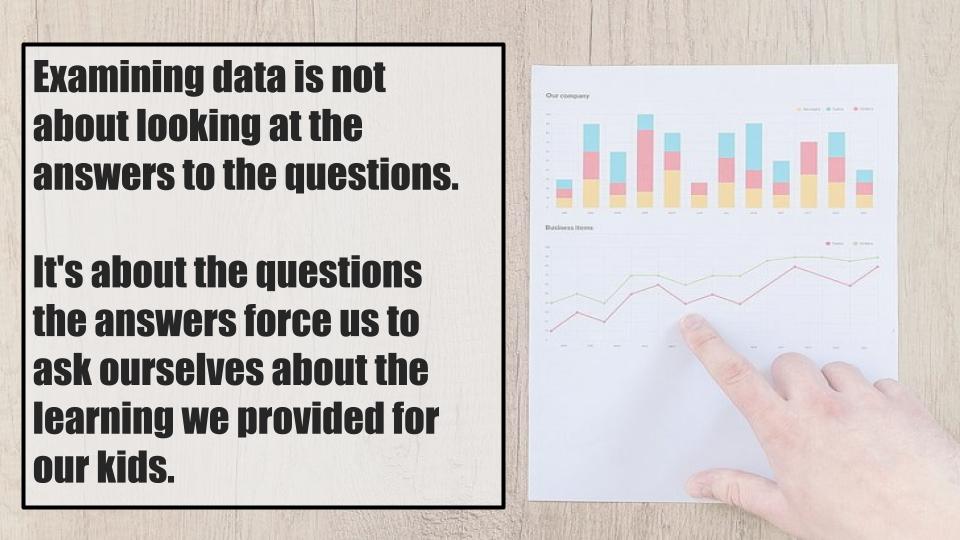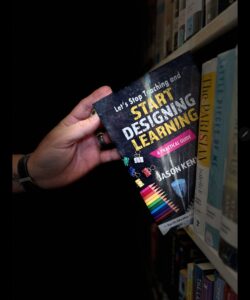When we talk about assessments in education, people usually think of all those standardized tests, number crunching, and chasing after academic goals. I think of the countless data rooms I have walked into filled with pie charts, some even in frames, like a museum of academic data. But this old-school view really misses the mark on what real assessment is all about. We need to shift gears from obsessing over scores that tell us how our learners are doing to asking deeper questions about our teaching methods and the kind of learning environments we’re creating.
Data Isn’t about the Kid
At first glance, assessment data seems to neatly split learners into categories: the high flyers, the strugglers, and everyone in between. But this simple view really doesn’t cut it. It overlooks the complex mix of personal learning paths, backgrounds, and feelings that heavily influence these outcomes. Scores and grades do not really say anything about our learners. They miss out on the different ways a learner tackles problems or comes up with ideas. They also miss out on the fact a learner might have been up all night caring for siblings, didn’t have breakfast or was simply just having one of those days. This superficial approach to assessment diminishes the nuanced and multidimensional nature of learning. When we reduce learners to mere statistics, we ignore the individual stories of perseverance, curiosity, and breakthroughs that define their educational journey. By focusing too much on these numbers, we risk overlooking the huge range of skills and potential every learner brings to the table, as well as other factors outside the school walls. This oversight not only limits our understanding of their capabilities but also hinders our ability to foster a diverse and rich learning environment where all forms of intelligence are recognized and valued.
Data Can Create Dialogues for Discovery
The real deal with assessments isn’t about just getting definite answers but about sparking important questions about how we design their learning. Instead of asking, “Why did this learner get a low score?” we should be wondering, “What part of my design for learning did not reach this learner?” This big shift turns assessments from being the final word into a tool for deep reflection, pushing us toward constant improvement and change. It opens up a dialogue between educators and learners, encouraging a shared responsibility in the learning process. This reflective practice not only helps us tailor our teaching strategies and design qualities, but also empowers learners to take an active role in their education, voicing their own insights and feedback. It encourages us to dig deeper into our design methods, aiming for approaches that truly meet the wide-ranging needs of our learners in a more inclusive, effective way. By engaging learners in this way, we transform the classroom into a dynamic space where learning is driven by curiosity and critical thinking, rather than passive receipt of information.
Assessments Can Strengthen Design
When we use assessments to spark questions instead of just slapping on final labels, we’re pushing for a kinder, more thoughtful way of doing education. It nudges us to take a hard look at what we teach, how we teach it, and how we can do better by really listening to what our learners have to say. All these factors should influence our learning design choices. This collaborative approach dismantles the traditional hierarchy in classrooms, positioning teachers and learners as partners in the educational journey. It champions the idea that learning is a continuous process, not just for learners but for educators as well. This approach doesn’t weaken our teaching game; it actually makes it stronger, creating a classroom vibe where learning goes both ways, and learners truly feel seen, heard, and supported as they chase their academic dreams. In this environment, every feedback session becomes an opportunity for growth, encouraging learners to approach challenges with resilience and creativity. This ethos of mutual respect and continuous learning lays the foundation for a classroom culture that celebrates progress, fosters innovation, and cultivates a lifelong love for learning.
Rethinking what assessments are all about brings us closer to a way of teaching that values real understanding over just memorizing stuff, asking questions over having all the answers, and growing over just staying put. This view asks a lot more from us teachers. It’s not just about grading how our learners do; it’s about looking inward and being ready to change things up. Let’s really appreciate how unique each learner is by using assessments to dig deeper into our teaching ways and spark the kind of change that makes a real difference. After all, what shows we’re doing a good job isn’t just the scores we collect, but the bold questions we ask and the changes we’re brave enough to make.


